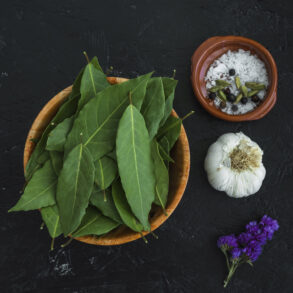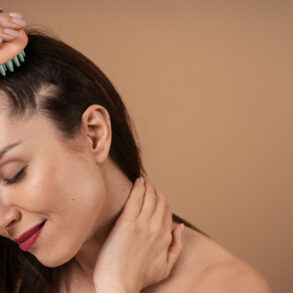The pursuit of healthy skin inevitably leads to a fundamental choice between two distinct medical philosophies: the ancient, holistic science of Ayurveda and the modern, targeted paradigm of Allopathy.
When confronted with a skin concern—be it a sudden, painful acne cyst, the relentless itch of eczema, or the subtle creep of fine lines—the most pressing question for any individual is: Ayurveda vs Allopathy in skincare – which one works faster?
This query, while seemingly simple, unravels into a complex exploration of what “working” truly means. Is it the rapid suppression of a visible symptom, or the sustained resolution of its underlying cause?
The debate of Ayurveda vs Allopathy in skincare – which one works faster is a clash of worldviews, one prioritizing immediate intervention and the other, foundational balance.
This exhaustive guide will dissect the mechanisms, timelines, and philosophical underpinnings of both systems to provide a definitive answer to Ayurveda vs Allopathy in skincare – which one works faster, empowering you to make an informed decision tailored to your skin’s immediate needs and long-term health.
The core of the question Ayurveda vs Allopathy in skincare – which one works faster lies in understanding their divergent definitions of “success.”
Allopathy, or Western medicine, operates on a model of diagnosis and targeted suppression.
It identifies a specific pathogen or pathological pathway and uses concentrated, often synthetic, compounds to interrupt it.
Its strength is its precision and speed in alleviating distress. Ayurveda, the “science of life,” views the skin as an outward reflection of internal harmony. A skin condition is a signal of systemic imbalance, or vikruti, particularly in the digestive fire (Agni) and the three bio-energies, or doshas.
Therefore, its approach is not to attack the symptom but to restore the body’s innate equilibrium, creating an environment where disease cannot thrive.
To thoroughly analyze Ayurveda vs Allopathy in skincare – which one works faster, we must examine both systems in granular detail, from their core principles to their practical applications for common skin complaints.
Part 1: The Allopathic Paradigm – Targeted Intervention for Rapid Results
Allopathic dermatology is rooted in the scientific method, relying on clinical trials, biochemical understanding, and standardized treatments. Its primary goal is the efficient and rapid elimination of symptoms.
1.1 Core Principles and Mechanisms of Action
Allopathy functions on the principle of “anti-” therapy: antibacterial, anti-inflammatory, antifungal, and anti-proliferative. It seeks to identify the single most influential factor in a disease process and block it.
- Targeted Molecular Action: Active ingredients are designed to bind to specific receptors or inhibit specific enzymes in the skin. For example, topical retinoids bind to retinoic acid receptors in the nucleus of skin cells, directly altering gene expression to accelerate cell turnover.
- Standardization and Potency: Dosages are precise and consistent, ensuring a predictable biological effect. A 0.05% tretinoin cream from one pharmacy is identical to that from another.
- Evidence-Based: Every recommended treatment is backed by decades of rigorous, reproducible clinical research demonstrating its efficacy and safety profile.
Common Allopathic Arsenal for Skin Conditions:
| Skin Condition | Allopathic Approach | Key Ingredients & Actions | Typical Onset of Action |
|---|---|---|---|
| Inflammatory Acne | Reduce bacteria & inflammation | Benzoyl Peroxide: Antibacterial. Topical Retinoids: Unclog pores. Oral Antibiotics: Systemic anti-inflammatory & antibacterial. | 48-72 hours (initial calming); 4-6 weeks (significant improvement) |
| Cystic Acne | Rapid inflammation reduction | Corticosteroid Injection: Direct anti-inflammatory shot into the lesion. | 24-48 hours |
| Eczema / Dermatitis | Suppress immune overreaction | Topical Corticosteroids: Potent anti-inflammatories. Calcineurin Inhibitors: Non-steroidal immunomodulators. | 24-72 hours |
| Psoriasis | Slow skin cell proliferation | Topical Vitamin D Analogues: Regulate cell growth. Topical Corticosteroids: Reduce inflammation & scaling. | 1-2 weeks |
| Photoaging / Wrinkles | Boost collagen & increase cell turnover | Prescription Retinoids: Stimulate collagen production, accelerate exfoliation. | 4-12 weeks (texture); 3-6 months (wrinkles) |
| Hyperpigmentation | Inhibit melanin production | Hydroquinone: Tyrosinase inhibitor. Vitamin C: Antioxidant & brightener. | 4-8 weeks |
1.2 The Speed Factor: When Allopathy is Unbeatable
In the context of Ayurveda vs Allopathy in skincare – which one works faster for acute crises, Allopathy is the undisputed champion. Its interventions are designed for rapid response.
- A corticosteroid injection can flatten a painful, throbbing cystic pimple in 24-48 hours.
- A potent topical steroid can halt the debilitating itch of an eczema flare-up within a day.
- Benzoyl peroxide can begin to reduce the redness and swelling of a pimple overnight.
This speed is Allopathy’s greatest strength. It provides rescue and relief when the patient is in significant physical or emotional distress, making it a critical tool in dermatological care. This is a key point in the discussion of Ayurveda vs Allopathy in skincare – which one works faster.
1.3 Limitations and Side Effects of the “Quick Fix”
The very mechanisms that grant Allopathy its speed also account for its primary drawbacks.
- Symptomatic Suppression: Allopathy often treats the symptom without addressing the root cause. For example, applying a steroid to eczema calms the inflammation but does not address the gut dysbiosis or immune dysregulation that may be driving it. This leads to a rebound effect; the condition frequently returns, sometimes with greater severity, once the medication is discontinued.
- Potential for Harsh Side Effects: The potent, targeted action is not selective. Retinoids cause dryness, peeling, and photosensitivity. Long-term antibiotic use disrupts the gut microbiome and can lead to bacterial resistance. Prolonged use of topical steroids can cause skin thinning (atrophy), telangiectasia (broken capillaries), and topical steroid addiction.
- Compromised Skin Barrier: The aggressive nature of many actives can impair the skin’s natural barrier function, leading to increased sensitivity, trans-epidermal water loss, and a vulnerability to environmental aggressors.
Part 2: The Ayurvedic Paradigm – Systemic Rebalancing for Sustainable Health
Ayurveda approaches skincare from a constitutional perspective. Health is defined as a state of balance between the body, mind, and consciousness, and disease is a state of imbalance.
2.1 Core Principles and Mechanisms of Action
Ayurvedic treatment is built on a few fundamental principles that directly oppose the allopathic “quick-fix” model.
- The Dosha Theory: Skin health is governed by the balance of Vata (air/ether), Pitta (fire/water), and Kapha (earth/water). Acne is often a Pitta-Kapha imbalance (heat and oil), while dry, aging skin is a Vata imbalance.
- The Importance of Agni (Digestive Fire): All disease begins in the gut. A weak or irregular Agni leads to the production of Ama, undigested toxic waste that circulates in the body and clogs channels (srotas), manifesting on the skin as impurities, dullness, and inflammation.
- Holistic Detoxification (Shodhana): Treatment involves purifying the body of Ama through Panchakarma (five cleansing actions) and using herbs that cleanse the blood (Rakta Shodhana) and tissues (Dhatus).
Common Ayurvedic Approaches for Skin Conditions:
| Skin Condition | Ayurvedic Diagnosis | Ayurvedic Approach | Key Herbs & Actions | Typical Onset of Action |
|---|---|---|---|---|
| Inflammatory Acne | Pitta-Kapha Imbalance | Cool Pitta, reduce Kapha, purify blood | Manjistha, Neem: Blood purifiers. Turmeric, Guduchi: Anti-inflammatory. Triphala: Digestive cleanser. | 4-8 weeks (reduced inflammation); 3-6 months (systemic balance) |
| Eczema / Dermatitis | Pitta-Vata Imbalance | Cool Pitta, moisturize Vata, strengthen digestion | Aloe Vera, Sandalwood, Gotu Kola: Cooling & healing. Ghee: Internal lubrication. | 2-4 weeks (soothing); 3+ months (remission) |
| Psoriasis | Vata-Kapha Imbalance (with Ama) | Deep detoxification, pacify Vata | Guggulu, Turmeric: Deep cleansing. Panchakarma: Medicated detox. | 3-6 months for significant change |
| Dry, Aging Skin | Vata Imbalance | Nourish, ground, and hydrate | Abhyanga (oil massage), Ashwagandha: Rejuvenating. Amla: Vitamin C for collagen. | 4-6 weeks (improved hydration); 6+ months (structural improvement) |
| Hyperpigmentation | Aggravated Pitta | Cool liver, purify blood | Manjistha, Aloe Vera, Indian Sarsaparilla: Blood cleansers & coolants. | 3-6 months for lightening |
2.2 The Speed Factor: The Deliberate Path to Root-Cause Resolution
In the direct comparison of Ayurveda vs Allopathy in skincare – which one works faster, Ayurveda is, without question, the slower path. It does not offer overnight miracles.
- It may take 4-8 weeks of consistent internal herb and dietary changes to see a noticeable reduction in inflammatory acne.
- Reversing chronic hyperpigmentation or achieving lasting remission from eczema can take 3-6 months of dedicated effort.
This timeline is not a flaw but a feature of the system. The body requires time to detoxify, heal the gut, rebalance hormones, and correct nutritional deficiencies. The speed of Ayurveda is the speed of genuine, cellular-level healing.
2.3 Strengths and Challenges of the Holistic Model
Ayurveda’s strengths are the inverse of Allopathy’s weaknesses.
- Root-Cause Resolution: By addressing the internal imbalance, Ayurveda aims for a permanent solution. Once balance is restored and maintained through lifestyle, the skin condition is far less likely to recur.
- Gentle and Nourishing: Treatments work with the body’s innate intelligence, strengthening it rather than suppressing its signals. They support the skin barrier rather than compromising it.
- Preventive Focus: The prescribed diet and lifestyle become a blueprint for long-term health, preventing future issues from arising.
However, this approach presents significant challenges:
- Requires Patience and Discipline: Results are not immediate, demanding a high level of commitment and consistency from the individual.
- Lack of Standardization: The potency of herbs can vary, and finding a qualified, authentic practitioner is crucial.
- Not Ideal for Acute Crises: While it can provide soothing relief, it is not equipped to handle a severe, rapidly worsening infection or a massive inflammatory flare-up with the same speed as Allopathy.
Part 3: Head-to-Head Comparative Analysis
To truly answer Ayurveda vs Allopathy in skincare – which one works faster, we must look at specific scenarios.
Table 3: Direct Comparison for Common Concerns
| Scenario | Allopathy (Speed & Outcome) | Ayurveda (Speed & Outcome) | Verdict: Which is “Faster”? |
|---|---|---|---|
| Single Painful Cystic Pimple | Very Fast (24-48 hrs). Injection flattens it. Outcome: Symptom resolved, but predisposition remains. | Slow (1-2 weeks). Herbs cool inflammation; pimple resolves naturally. Outcome: Symptom resolved, systemic heat reduced. | Allopathy is faster. |
| Chronic Hormonal Acne | Moderately Fast (4-8 wks). Pills/creams control it while in use. Outcome: Recurs after stopping treatment. | Slow (3-6 months). Diet, herbs, and lifestyle rebalance hormones. Outcome: Long-term remission likely. | Allopathy controls faster; Ayurveda “cures” faster in the long run. |
| Acute Eczema Flare-up | Very Fast (24-72 hrs). Steroid cream suppresses itch and redness. Outcome: Immediate relief, potential rebound. | Slow (2-4 wks). Cooling diet and herbs slowly reduce heat. Outcome: Gradual, sustained calming. | Allopathy is faster for crisis relief. |
| Managing Eczema Long-Term | Prevention is challenging. Relies on avoiding triggers and intermittent steroid use. | Effective long-term. Lifestyle becomes the medicine, preventing flares. Outcome: Fewer and less severe flares over time. | Ayurveda achieves “control” faster over a year. |
| Reducing Wrinkles | Moderately Fast (3-6 months). Retinoids directly stimulate collagen. Outcome: Measurable improvement. | Slow (6+ months). Internal rejuvenators and oil massage nourish skin. Outcome: Gradual improvement in radiance and firmness. | Allopathy is faster for structural change. |
Part 4: The Integrative Model – A Synergistic Path Forward
The most intelligent answer to Ayurveda vs Allopathy in skincare – which one works faster is to reject the binary choice and adopt an integrative model. This approach harnesses the strengths of both systems.
The Integrative Protocol:
- Crisis Management with Allopathy: For a severe, painful, or sudden flare-up, consult a dermatologist. Use the prescribed steroid, antibiotic, or retinoid to gain immediate control over the situation. This provides relief and prevents the condition from worsening.
- Root-Cause Resolution with Ayurveda: While the symptoms are under control, consult an Ayurvedic practitioner. Begin working on the internal imbalances through a personalized diet (Ahara), herbal supplements (Aushadhi), and daily routines (Dinacharya). This addresses the gut-skin axis, hormonal balance, and systemic toxicity.
- Gradual Transition: As the internal health improves and the skin becomes more stable, you can often reduce your reliance on allopathic medications under the guidance of both your dermatologist and Ayurvedic practitioner. The goal is to use Allopathy less and less frequently as Ayurveda builds a more resilient foundation.
Example: An individual with severe cystic acne could use a short course of oral antibiotics and a topical retinoid from their dermatologist to quickly clear the active breakout (Allopathy).
Simultaneously, they would work with an Ayurvedic doctor to implement a Pitta-pacifying diet, take blood-purifying herbs like Manjistha and Neem, and use Triphala to support digestion (Ayurveda). Over 4-6 months, as the internal heat reduces, they may find they no longer need the antibiotics and can maintain clear skin with diet and lifestyle alone.
Final Verdict: Ayurveda vs Allopathy in Skincare – Which One Works Faster?
After this exhaustive analysis, the definitive answer to Ayurveda vs Allopathy in skincare – which one works faster is clear and contextual:
- If your definition of “works” is “suppresses a visible symptom in the shortest amount of time,” then Allopathy is unequivocally, dramatically faster. Its powerful, targeted agents are designed for rapid intervention and are indispensable for managing acute crises.
- If your definition of “works” is “resolves the root cause for long-term health and prevents recurrence,” then Ayurveda achieves this goal faster in the grand, lifelong timeline of your skin’s health. While its start is slower, its trajectory is aimed at permanent resolution, ultimately saving time, money, and distress in the long run.
Allopathy wins the sprint. Ayurveda wins the marathon.
Allopathy is the expert firefighter, rushing in to extinguish a dangerous blaze.
Ayurveda is the wise architect, designing a fire-resistant structure and teaching the occupants safe habits to prevent fires from starting. The most profound answer to the question Ayurveda vs Allopathy in skincare – which one works faster is that they are not opponents but partners.
By using Allopathy for immediate rescue and Ayurveda for foundational healing, you create a comprehensive, compassionate, and ultimately faster path to achieving not just clear skin, but lasting skin vitality.










